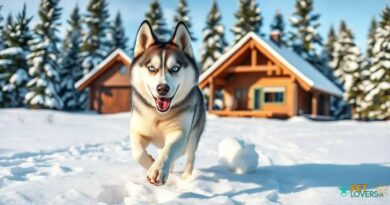What is Nose breeds
What is Nose Breeds?
Nose breeds refer to a specific category of dog breeds that possess an exceptional sense of smell. These breeds have been selectively bred for their olfactory capabilities, making them invaluable in various roles, such as search and rescue, detection work, and hunting. The anatomy of their noses is uniquely adapted to enhance their ability to detect scents, which is a fascinating aspect of canine biology.
Characteristics of Nose Breeds
Nose breeds typically exhibit certain physical characteristics that contribute to their superior smelling abilities. These include a long, narrow snout, large nostrils, and a highly developed olfactory bulb in the brain. Breeds such as Bloodhounds, Beagles, and German Shepherds are prime examples of nose breeds, each showcasing distinct traits that aid in scent detection.
Common Nose Breeds
Some of the most recognized nose breeds include the Bloodhound, known for its incredible tracking abilities, and the Beagle, which is often used in detection work due to its keen sense of smell. Other breeds like the Labrador Retriever and the German Shepherd also fall into this category, frequently utilized in police and military work for their olfactory prowess.
The Role of Nose Breeds in Search and Rescue
Nose breeds play a crucial role in search and rescue operations. Their ability to track scents over long distances and through challenging terrains makes them essential in locating missing persons or detecting disaster survivors. The training these dogs undergo is rigorous, focusing on honing their natural instincts and enhancing their scent detection skills.
Nose Breeds in Detection Work
In addition to search and rescue, nose breeds are extensively used in detection work, including drug and explosives detection. Their acute sense of smell allows them to identify specific scents even in highly complex environments. This capability is not only beneficial for law enforcement but also for security in various public spaces.
Training Nose Breeds
Training nose breeds requires specialized techniques that leverage their natural abilities. Positive reinforcement is a key component, encouraging dogs to associate scent detection with rewards. Training sessions often involve scent discrimination exercises, where dogs learn to identify and differentiate between various odors, enhancing their skills over time.
The Importance of Socialization
Socialization is vital for nose breeds, as it helps them develop a balanced temperament. Exposure to different environments, people, and other animals ensures that these dogs remain well-adjusted and confident. A well-socialized nose breed is not only more effective in their work but also a better companion in everyday life.
Health Considerations for Nose Breeds
Like all dog breeds, nose breeds are susceptible to certain health issues. Common concerns include hip dysplasia, ear infections, and obesity, which can affect their overall well-being and performance. Regular veterinary check-ups, a balanced diet, and appropriate exercise are essential to maintain their health and longevity.
Famous Nose Breeds in History
Throughout history, nose breeds have played significant roles in human society. For instance, Bloodhounds have been used for centuries to track criminals, while Beagles have been employed in agricultural settings for hunting small game. Their contributions to various fields underscore the importance of these breeds in our lives.
Choosing the Right Nose Breed
When considering a nose breed as a pet or working dog, it’s essential to evaluate your lifestyle and needs. Different breeds have varying energy levels, temperaments, and training requirements. Understanding these factors will help you select the right nose breed that fits seamlessly into your life, whether for companionship or specialized work.




